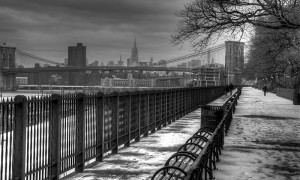For two years (thank you, Covid), reservations for a three-night stay in Norway’s second-largest city lingered, awaiting my eventual arrival. At last! The opportunity came and I grabbed it. I’ll just put it out there: I fell in love with Bergen.
Traveling on my own, I caught the train to the city from the airport (super-easy) and used a cellphone-generated map to find the Bergen Børs Hotel. It is a quiet refuge at the city’s center. The handsome building was built in 1862 to house the city’s stock exchange. My multi-level suite was in the rafters, quirky but roomy and well-appointed. Since these three days were an interlude between two separate group adventures, I began with a quiet glass of port at the hotel restaurant, a long sleep, and sending off some laundry. Then, I simply followed my nose, and history came alive. Bergen is a very easy city to walk, and I followed my feet all over the place!
Just across the street from the hotel is the inner end of Bergen Harbor with its famous fish market. Further around the bend is Bryggen, a self-contained colony-neighborhood where German merchants known as the Hanseatic League created an overseas office in 1360. They made Bergen a major trading and seafaring port, and were a dominant force for 400 years. The droopy, off-kilter buildings that remain are now a UNESCO World Cultural Heritage site.


Further along that side of the harbor, I came across Rosenkrantz Tower, which dates from 1270 when it was part of the Royal Castle. Although it has endured various owners and iterations (gaining much of its present form in 1563), it is still said to be the most prominent renaissance building in Norway.

Inside the tower was an excellent display about the great Battle of Vågen (Bergen) in 1665. A group of Dutch ships laden with ebony, silk, precious stones, pearls, and china—riches worth more than the total annual revenue of the Danish crown—tried to evade attackers by skirting the English Channel and sailing north of Scotland. However, a storm arose, so they took shelter at Vågen. Both the Danes and English were sorely tempted by the Dutch cargo, and secretly conspired to attack. One cannonball from the ensuing battle remains embedded in the wall of Bergen Cathedral to this day (although occasionally it reportedly falls out and has to be stuck back up there!).


As I exited the tower, I encountered a guide shepherding a Walking Tour group, and he let me tag along. I am now a fan of such things, because Dane, our guide, was chock full of interesting information and knowledge that was well worth the modest $25 fee. He ignited in me great curiosity about the Norwegian sagas and Norse mythology when we stopped by the statue of Icelandic historian, politician and poet Snorri Sturluson (1179-1241).

We passed the house where Gerhard Henrik Armauer Hansen (1841-1912) was born. In 1873, Hansen suggested that microorganisms could be a cause of chronic infectious disease—a first for medical science.. Using a newfangled microscope, he identified the bacterium that causes leprosy. When I came across the Leprosy Museum near the train station a couple of days later, I discovered an interesting but sad history, replete with rejection and shunning for those afflicted not by evil spirits (as was once presumed), but by a treatable illness.
Bergen’s beauty radiates from its twisting, cobblestone streets, to the jumbles of houses around the harbor and upon the hillsides, and furthest up, to the natural beauty of its seven forested peaks. It rains in Bergen (a lot—239 days per year, the most in Europe), but they say on a clear day everyone suddenly needs a “sick” day and the hillsides are filled with walkers! (The day I went to the top was very misty and wet, so there was no view. So it goes. Sometimes, you cannot afford to wait for the sun!)
I’d like to go back to Bergen for lots of reasons. One vaguely frivolous one stems from when 273,000 pounds of explosives in a munitions ship in the harbor blew up on April, 1944. It killed 18 people, wounded 4,800, and destroyed 131 houses (which is why one side of the harbor has such modern buildings). What interests me is the piece of the anchor from the ship that was later found three kilometers away, high up on Sandviksfjellet mountain! It seems to me that hiking up to see it (hopefully, in the sun) is a worthy excuse to visit Bergen again someday.
Norway is also famous for its trolls. Stay tuned for more!
Kate Dernocoeur had a quiet (and healthy, thank goodness) COVID year at home on her rural road in Lowell, Michigan, but is happy to be free again to get out to the wild and beautiful places. This post originally appeared in her blog, “Generally Write” at www.katedernocoeur.com










